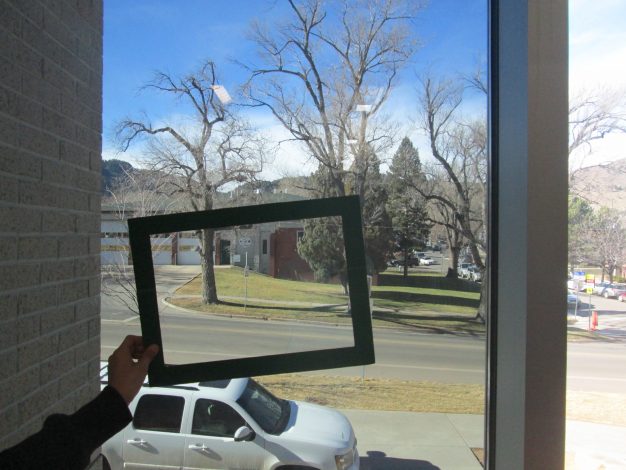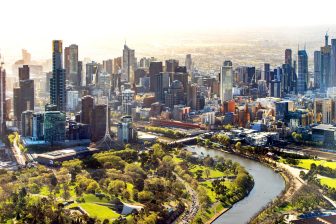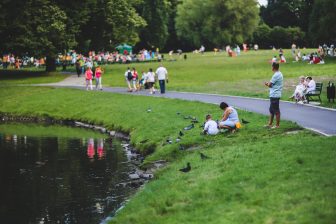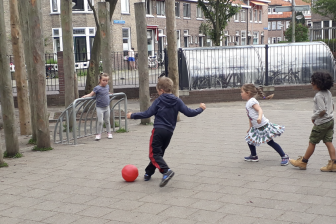
Biophilic cities: don’t forget the buildings!
Many recent movements have promoted the greening of cities and connecting children and families to nature. A growing body of research tells us that nature provides many benefits, including increased health and well-being. In participatory planning projects, children also seek access to nature within the city (see Children Seek Access to Nature; Derr and Tarantini 2016, Derr and Kovács 2015). However, despite the efforts being made to provide quality nature experiences, we also know that children still spend the majority of their time indoors. Much of this time is in a school setting.
This semester, university students have worked with middle school students (ages 11-13) to explore their “green” school, a LEED Certified School that features many sustainable features, such as geothermal and solar energy systems. Through hands-on lessons, students collaboratively explore what a sustainable school means. In their most recent module, students have been designing their “ideal” school.
While the children recognize the importance of sustainable features, the most consistent desire among all the groups is that they want to increase natural features within the school building. Design suggestions include somewhat practical suggestions, such as vertical gardens, green walls, and greenhouse libraries, as well as some fantastical, such as a pond school with floating pods as classrooms.
There are many examples of green schools and museums for children around the world (e.g., Derr and Kellert 2013, Makovsky et al. 2009). Most of these successfully integrate nature into outdoor classrooms, innovative landscape features, and gardens. However, very few of these successfully integrate nature into the buildings. The students’ suggestions remind us, however, that we could think more broadly about our built environment. Going outdoors isn’t always feasible for every lesson or part of the day. The question thus remains: how can we create higher quality interior environments that also help connect children to nature?
Author: Victoria Derr
Photo Credit: Photo by Maryland GovPics https://www.flickr.com/photos/mdgovpics/14328598054/
Resources:
Derr, V. & Tarantini, E. (2016). “Because We Are All People:” Outcomes and Reflections from Young People’s Participation in the Planning and Design of Child-Friendly Public Spaces. Local Environment: International Journal of Justice and Sustainability. http://dx.doi.org/10.1080/13549839.2016.1145643
Derr, V. & I. Kovács. (2015). How participatory processes impact children and contribute to planning: A case study of neighbourhood design from Boulder, Colorado, USA. Journal of Urbanism: International Research on Placemaking and Urban Sustainability. http://www.tandfonline.com/doi/full/10.1080/17549175.2015.1111925
Derr, V. & Kellert, S. R. (2013). Making Children’s Environments “R.E.D.”: Restorative Environmental Design and Its Relationship to Sustainable Design. In E. Pavlides and J. Wells (Eds.): Proceedings of the 44th Annual Conference of the Environmental Design Research Association. Providence, Rhode Island. May 29-June 1, 2013.
Makovsky, P., Pedersen, M.C., Cameron, K., & Greenberg, R. (2009). “IDEO’s ten tips for creating a 21st-Century classroom experience, Metropolis: Architecture: Design, 28(7), 80-91.



